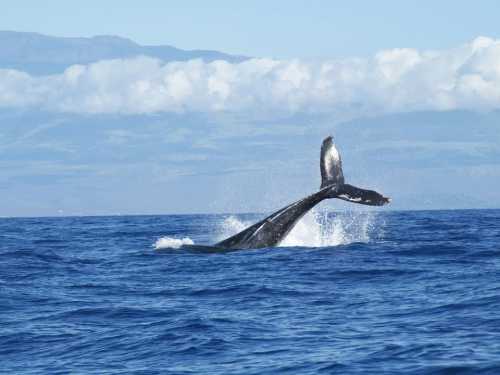
There are almost no giants left in the world. Huge reptiles have long since become extinct, and the megafauna of mammals has not survived climate change and human expansion. All the more amazing and valuable is the fact that we live at the same time as the largest animal on the planet in its entire history – the blue whale!
These creatures need no introduction. For over a million years, blue whales have been traveling all over the oceans, from the hot equatorial waters to the icy polar expanses. During their lifetime, the descendant of ancient ungulates swims hundreds of thousands of kilometers, a journey most people can only dream of.
An encounter with such an animal is an event you will never forget. Neither text nor photos can convey the emotions a person experiences when a colossus 25-30 meters long and weighing up to 150 tons swims past them. Some people admit that after such a meeting, thoughts about the fragility of human existence and the greatness of nature involuntarily arise in their heads.
Well, the whale doesn't care about such an encounter, he's never seen anything like it in his long life. People never doubted that sea titans live long, but exact figures appeared in the middle of the last century: leviathans reach their maximum size by the age of 32 and live to be 80-90 years old, or even more.
To find out the desired figures, scientists had to dig into the ears and take earwax tests. Since our heroes do not have flippers and are unable to clean their ears, the wax is deposited in the ears throughout their lives, where it turns into a hefty plug. The color of the deposits varies and depends on the season. Count the number of layers in it – and you will get the age of the whale, just like with a tree.
But how do they hear each other with such gags? The answer is simple: they scream very loudly in infrasound. Usually the animals keep a social distance of 2-3 kilometers, this distance allows them not to interfere with each other's filtering of krill from the water. And they need a lot of food: in one day a whale can swallow up to 4 tons of crustaceans!
But you want to communicate, so you have to increase the volume. And this is not the limit: several dialogues have been recorded, in which the participants were at a distance of 30 kilometers! And highly sensitive equipment allows you to detect whale cries at a distance of more than 400 kilometers! The masters of the oceans chatter about different things. Their intelligence is difficult to compare with the intelligence of their smaller relatives, but their repertoire consists of a whole set of powerful signals, which even have their own “dialects” depending on the population. Thanks to constant negotiations, whales keep their distance, report obstacles in their path and, of course, court the girls.
Breeding such healthy creatures is not a quick task. Sea travelers do not have a clear mating season, as females give birth every two years. And males will fight to win their attention – an extremely rare chance to mate.
If the girl likes the boy, they will have a baby. The father will not see him soon: the pregnancy lasts about a year, and during this time he will have time to wind up on the other side of the world. But the father, in fact, is not really needed: the calf is protected from almost all dangers by its size, only killer whales risk attacking the “babies” as long as a great white shark and weighing 2 tons.
But these are just the beginning: in 7 months the calf will grow to the size of a large bus and weigh at least 20 tons. All thanks to the mother: try drinking 200-400 liters of her milk a day, and you will grow like a prodigy. But big does not mean adult, puberty in a whale will begin by its 10th birthday.
My rating for blue whales: 10 out of 10. They are huge and majestic creatures, compared to which humans seem like small, fussy ants. But over the past 100 years, their numbers have decreased by more than 99%. The main reason for this catastrophic decline was commercial hunting, which in the 20th century brought the species to the brink of extinction. Today, when hunting is prohibited, new threats are preventing their recovery: chemical and noise pollution of the ocean. Like many other inhabitants of water spaces, whales are extremely vulnerable to changes in their habitat, and now they are reaping the fruits of human technological progress.





